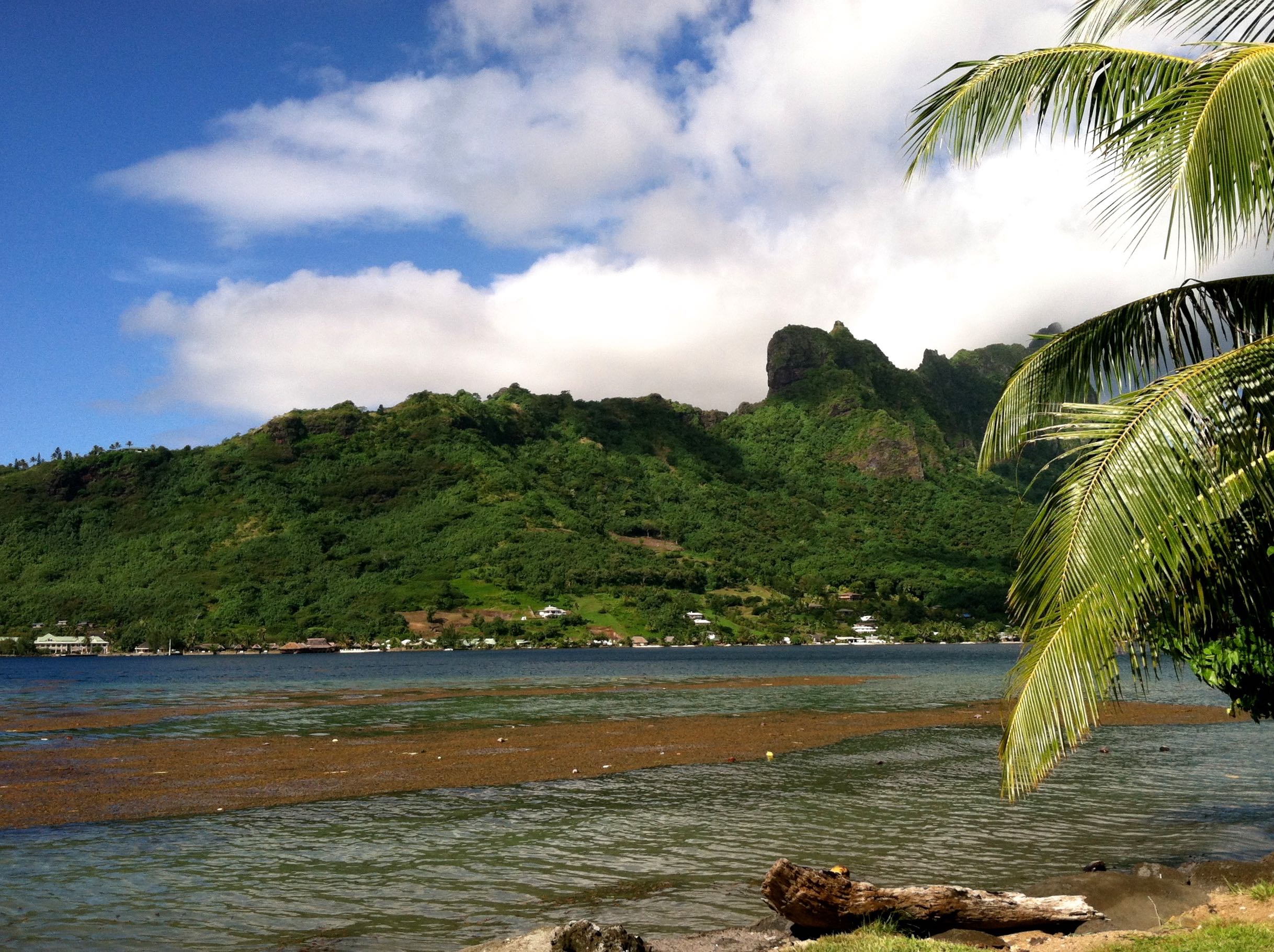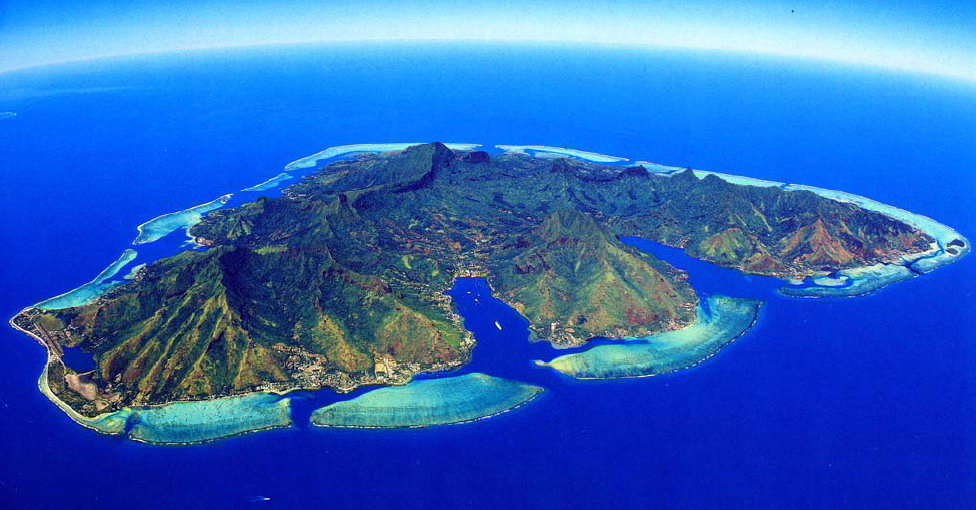By Emily Schmeltzer, Invertebrate Zoology Lab
Hi everyone! Although I don't have much to show for it just yet, I was asked to write a series of blog posts about my current research trip to Mo'orea and Tetiaroa in the Society Islands of French Polynesia. Talk about a fantastic place to do some fieldwork!

Mo'orea is a small island and coral atoll near Tahiti, and is about 10 miles in width east to west. A coral atoll is formed over tens of thousands of years! Coral begins to grow as a fringing reef on an oceanic island, and as the island landmass is eroded and begins to become submerged, the coral continues to grow and forms a barrier reef. Once enough of the interior island is submerged, it forms a lagoon on the inner part of the barrier reef. You can visualize this formation from the aerial photograph below.

For most graduate students, summer is a prime opportunity to get some fieldwork done and it's no exception for the invert lab (I know my fellow labmates stateside are getting some serious invertebrate wrangling done). My research here focuses on the microbiomes of both corals and their epibiotic invertebrates- more on that later! For now I am helping TA a class on marine biodiversity and AAUS scientific diving, as well as working in collaboration with some folks from the Smithsonian on a global project-more on that later too! Things here at the Richard B. Gump South Pacific Research Station are made easier by the resources available to scientists: molecular lab, seawater pumps and water tables, small boats and kayaks, tanks for SCUBA diving, etc. It is essentially a marine biologist's dream come true (minus the mosquitoes- yikes!), and has been home base for some incredible research from institutions and scientists all over the globe (e.g. Moorea Coral Reef LTER, Moorea Biocode Project-check these out, you won't be disappointed).

Unfortunately I don't have many pictures or research to show you (yet!) as all my gear is currently on a cargo boat to another island called Tetiaroa. I leave tomorrow morning to do some work on Tetiaroa for about two weeks, so I will have to post again when I get there. Until then, see you later! Or as they say on the island: ara'uaa'e!

